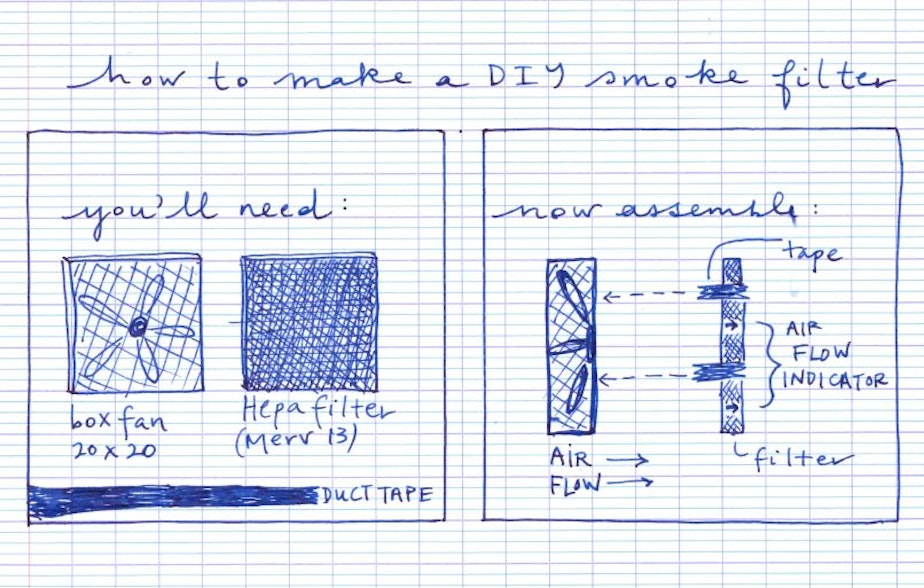5 tips for limiting wildfire smoke in your house

Your eyes sting and your throat feels dry. If you live in the Seattle area, chances are you don't have central air.
But you can seal up your house and keep the air fresh on a budget. Read on.
Air purifiers
Make sure your air purifier does not produce ozone, which irritates the lungs. Even low levels of exposure to the gas can harm your health.
When buying an air purifier, stay away from terms like “electronic” and “ionizing.”
Make sure that the machine is up for the job by matching the purifier’s capacity to the square footage of the room you want to filter. Consumer Reports also has an air purifier buying guide.
Sponsored
DIY box fan purifier
You can also make your own air purifier with a filter rated Merv 13 and a box fan.

Shoes off
Consider getting a "welcome mat," with tight ribbing, like what you’d see at the entrance to a mall.
Sponsored
The American Lung Association recommends removing your shoes at home, or at least using floor mats at the door, so you don’t track anything in.
Particles that have settled outside can get stuck to the bottom of shoes. Walking over this mat can help prevent these particles inside the home.
Protect your indoor air
When the air gets smoky, reduce your exposure as much as possible; stay inside and close the windows and doors to keep smoke out.
If it seems smoke is still coming in, putting a wet towel at the cracks of the doors and windows can also help.
Sponsored
Try to keep the air in the home clean. Don’t use air fresheners or incense, and don’t fry food, because those release particles can be inhaled.
Air filters (folks with central air)
If you have central air in your home, you can upgrade the filter in the system to better remove particles from wildfire smoke.
Remove a hatch on the side of the furnace, pull out the air filter and check. Merv 12 is too low.
The American Lung Association recommends a filter with a MERV rating of 13 or above (as long as it works with your central air system). That’s a measure of efficiency that stands for Minimum Efficiency Reporting Value; the higher the rating, the more particles in the air the filter catches, according to the Environmental Protection Agency.

